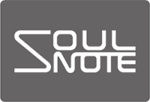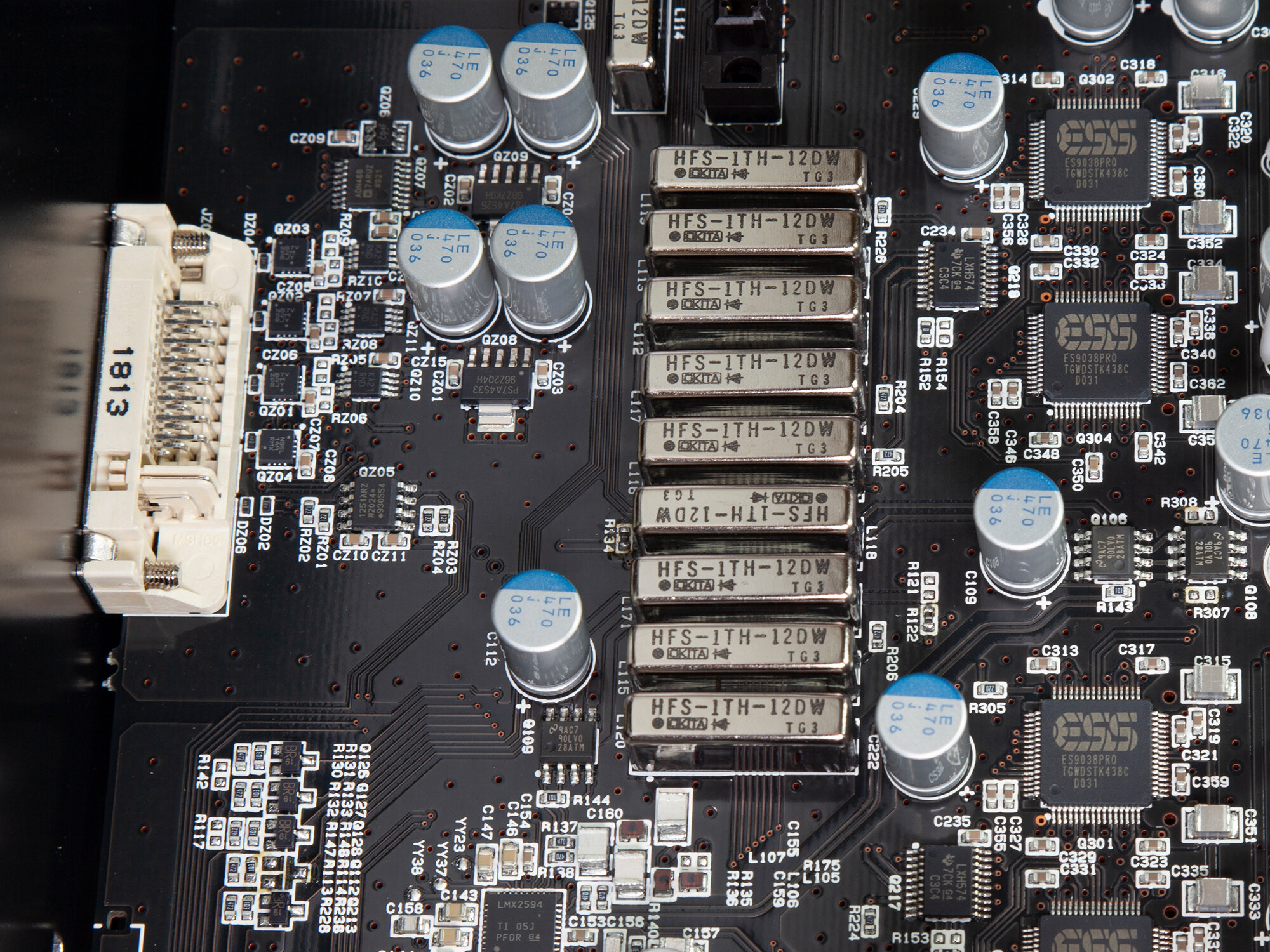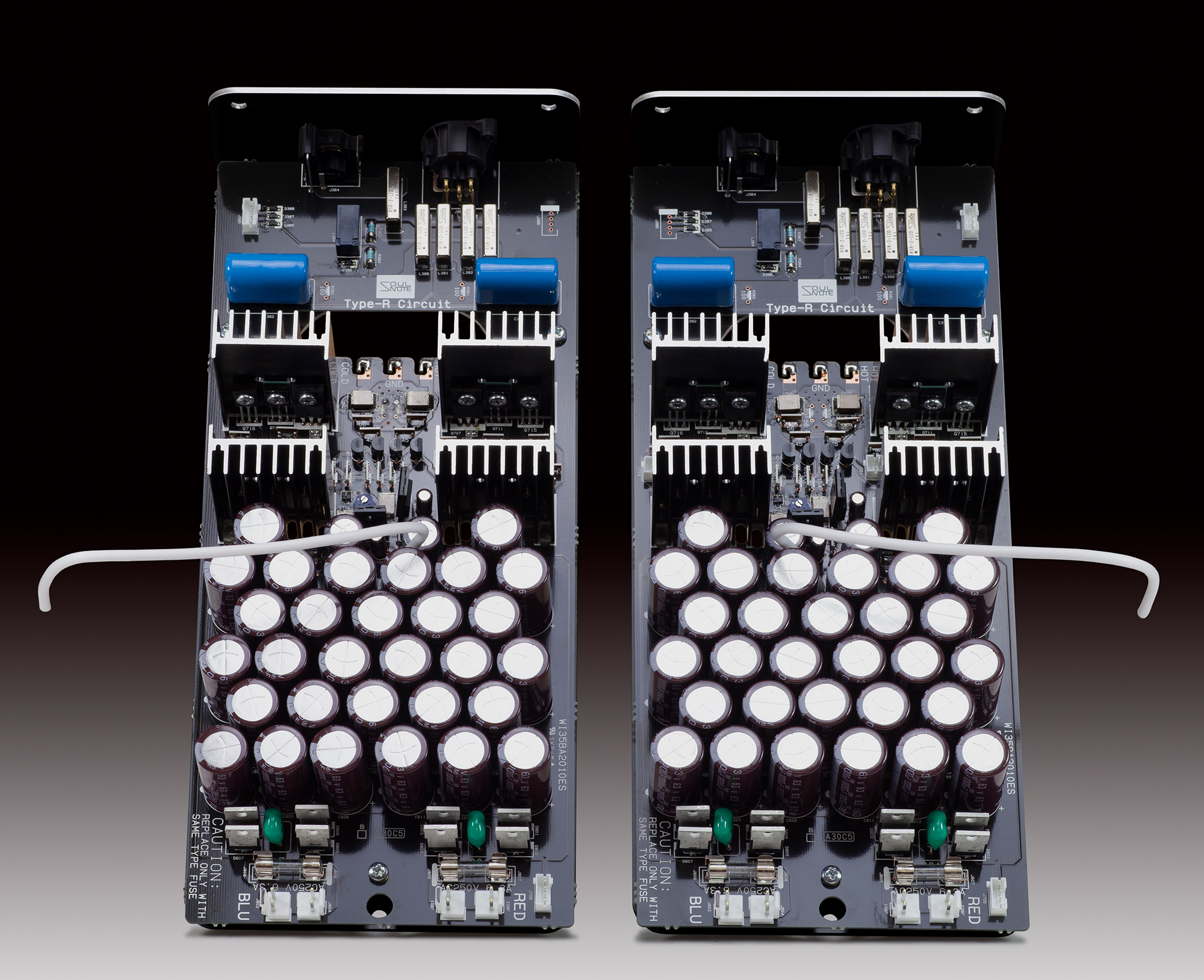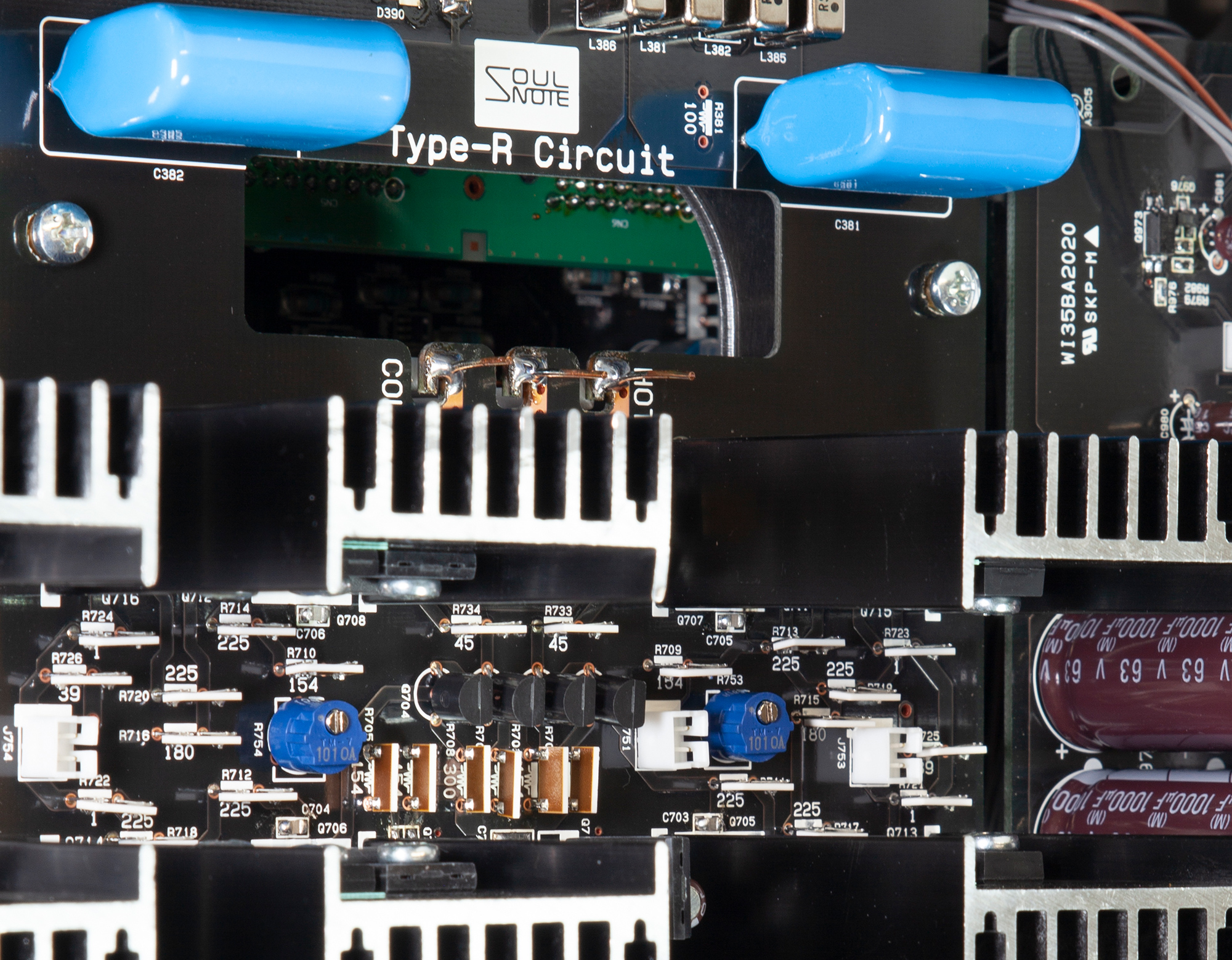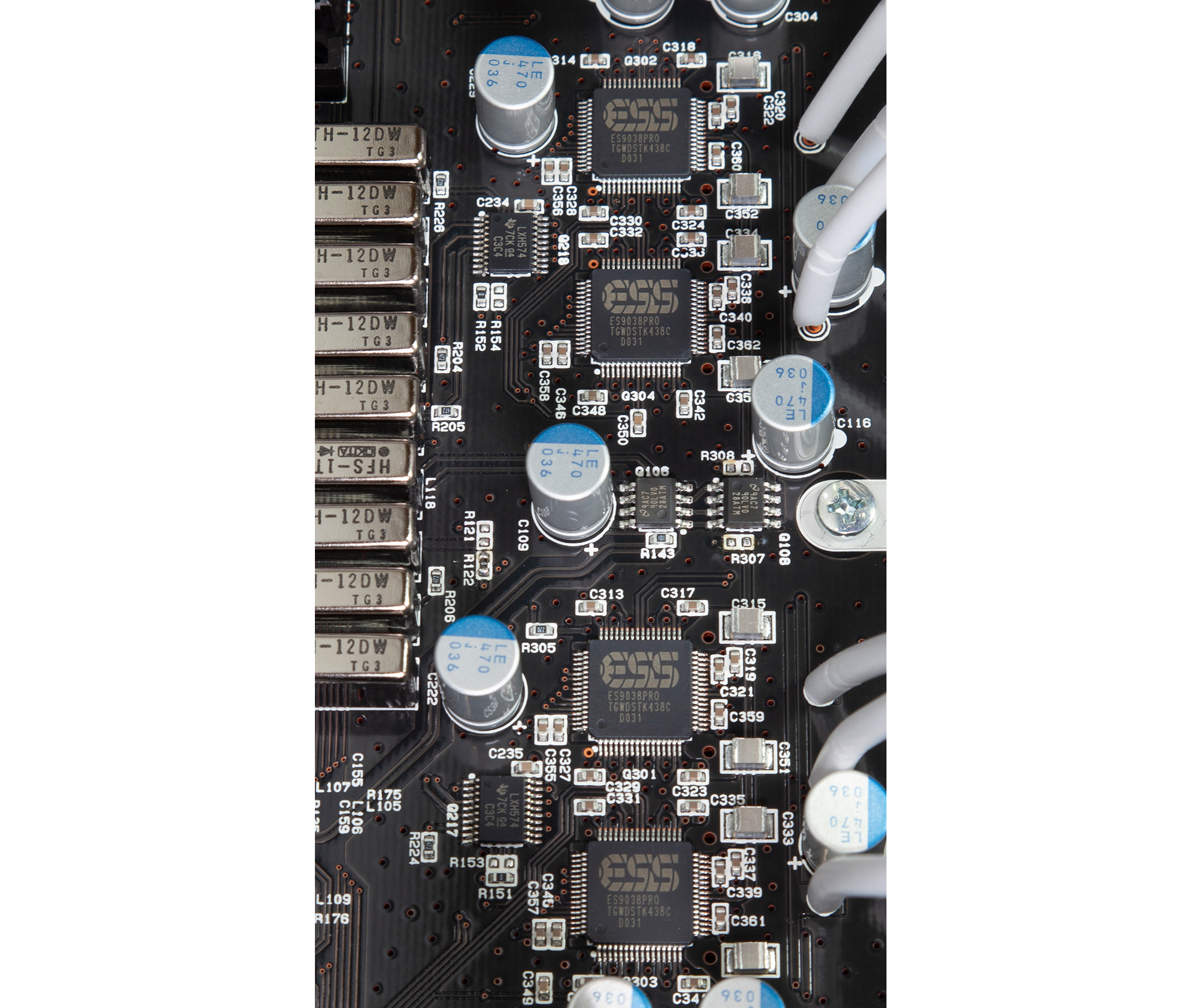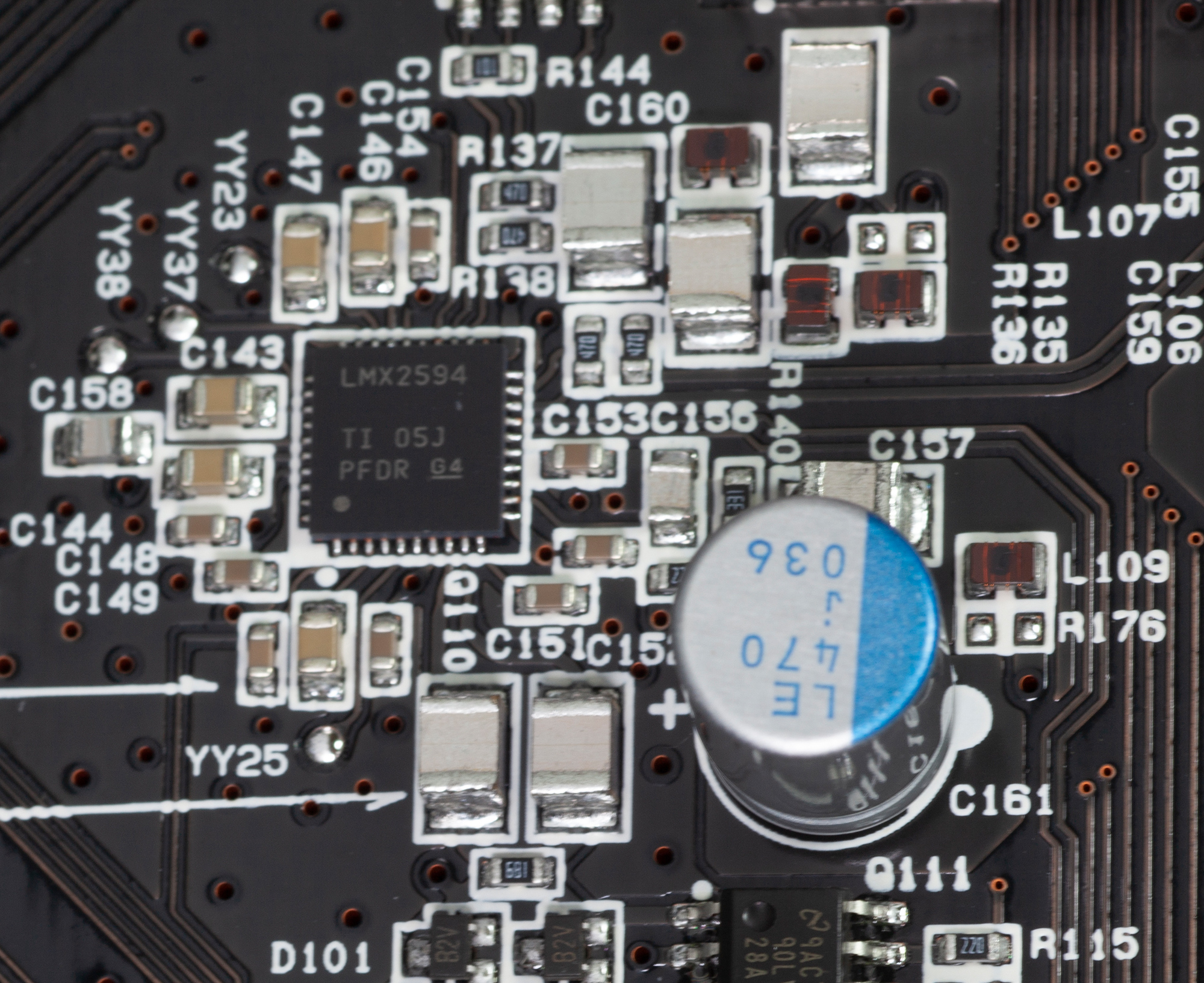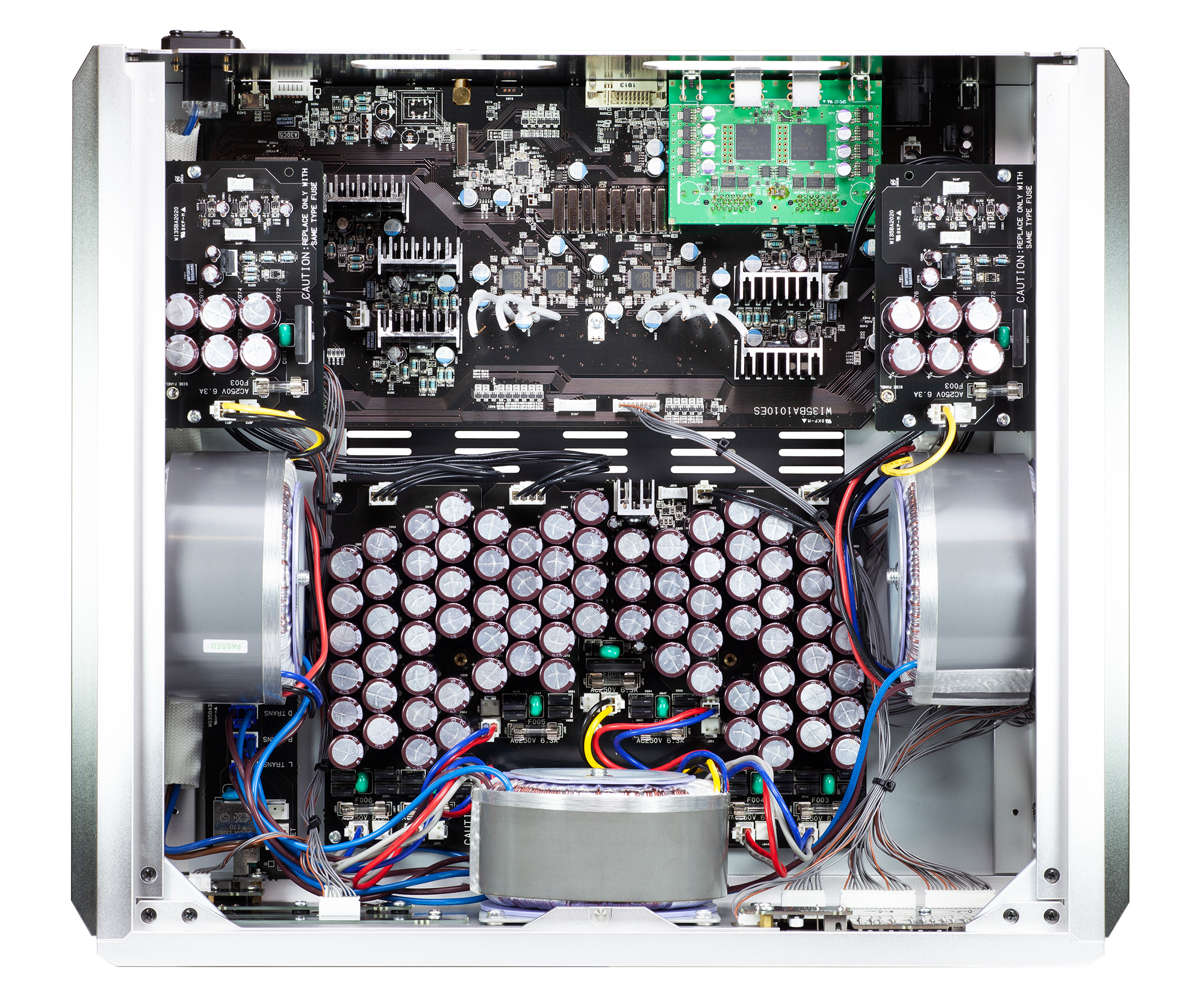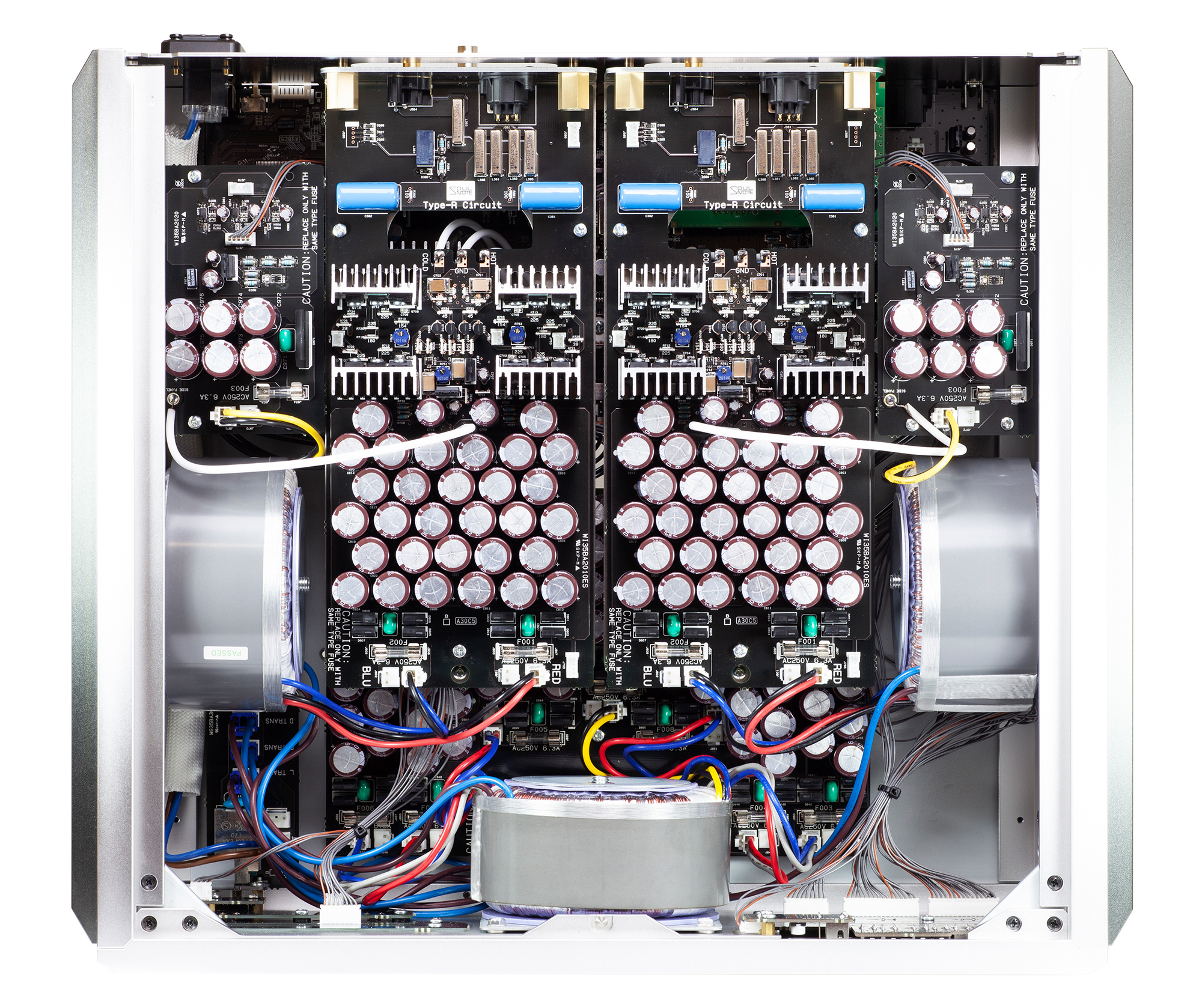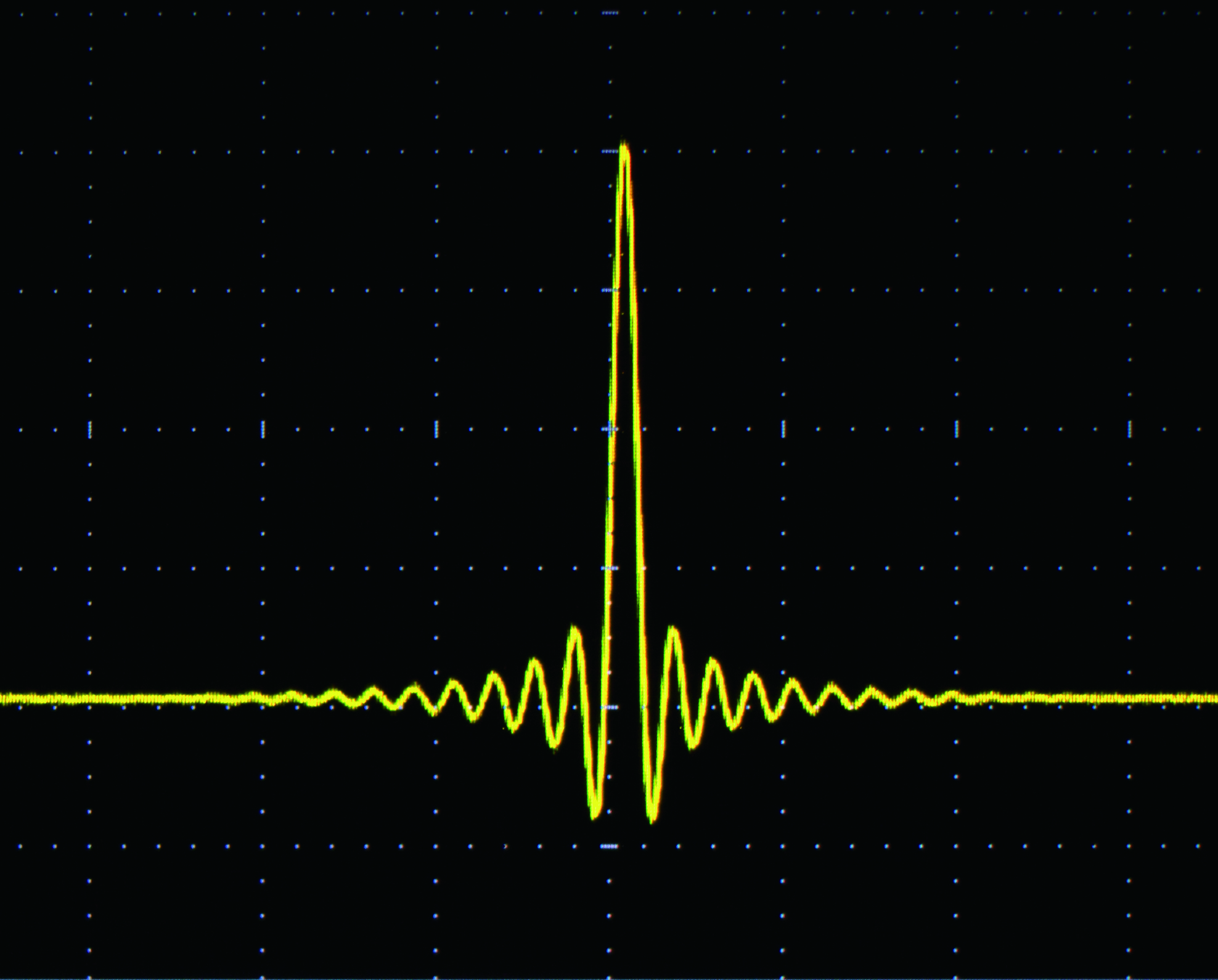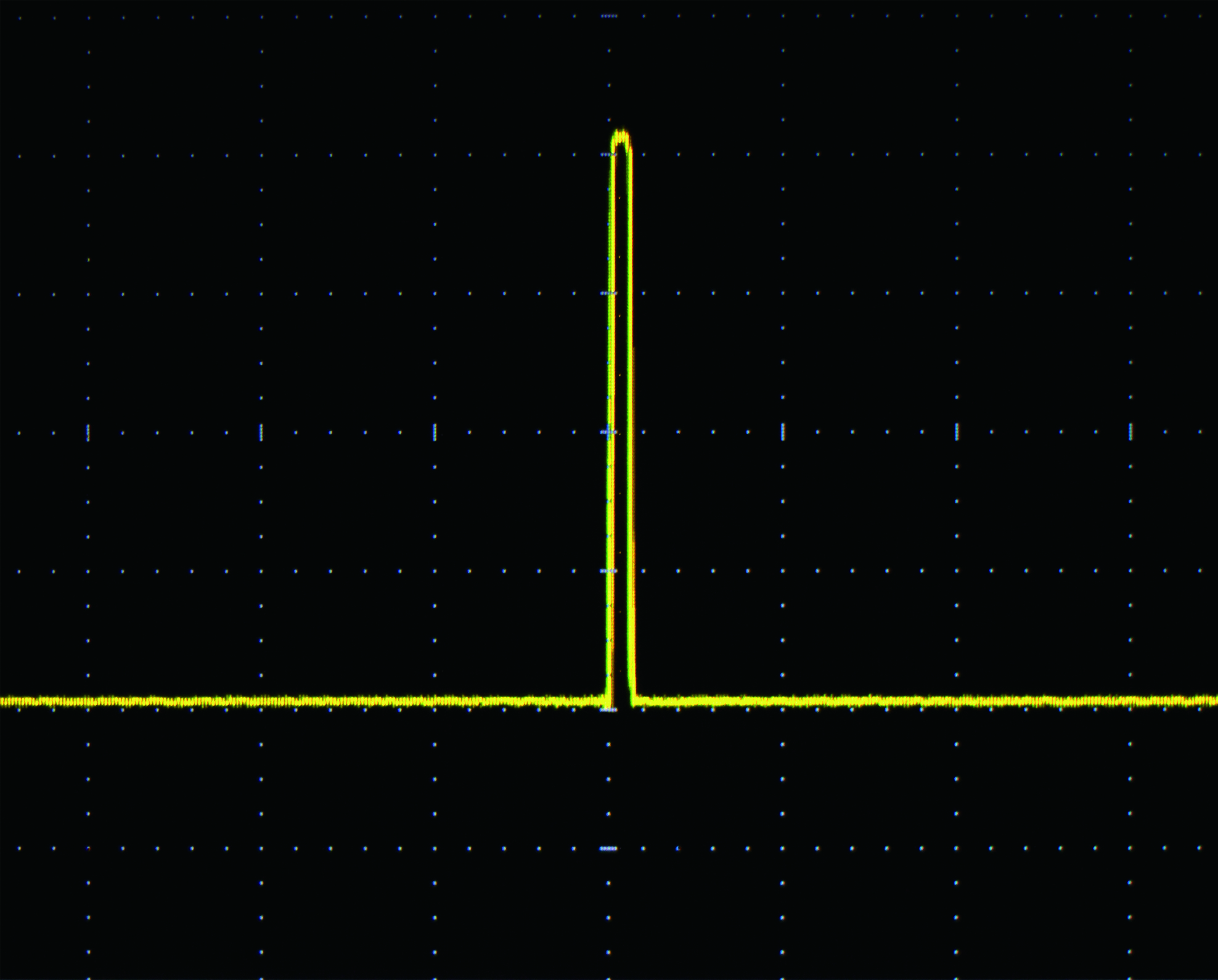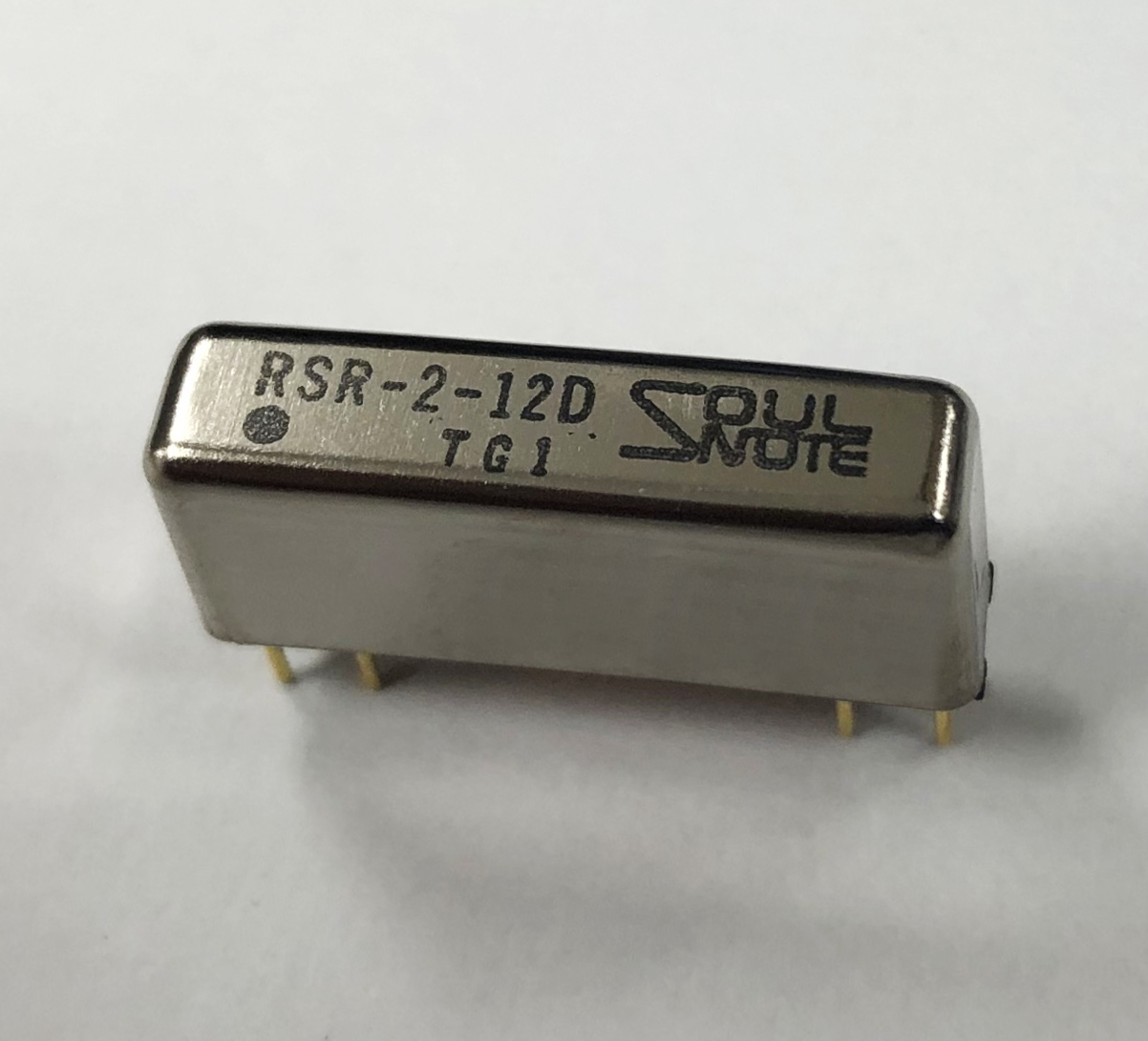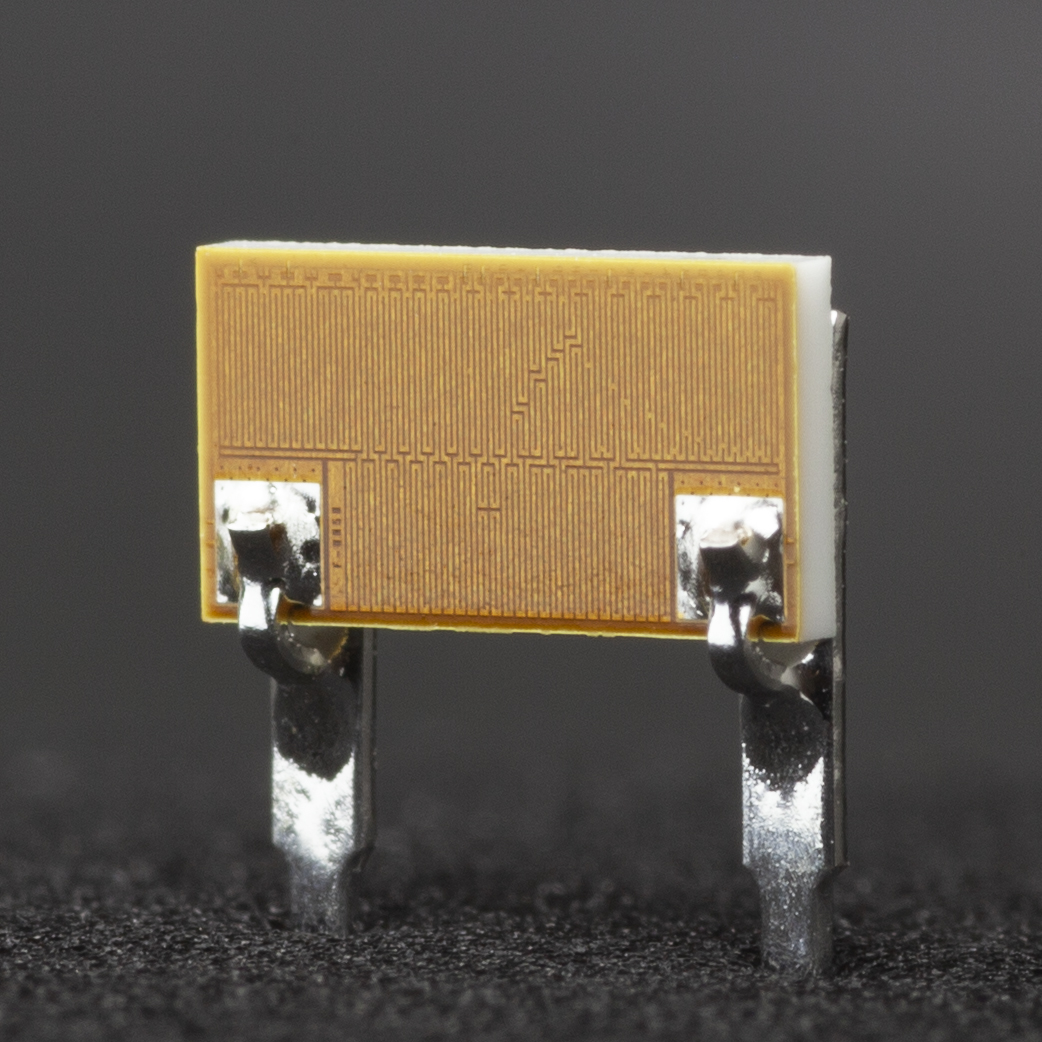TECHNOLOGY
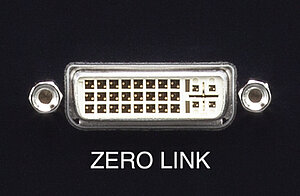
Connecting a network transport equipped with ZERO LINK creates a network system that is completely synchronized with the DAC clock, achieving dramatic improvements in sound quality by eliminating asynchronous circuits. The input from the ZERO LINK terminals passes through a selector consisting of a mechanical relay that does not add jitter and connects directly to the DAC chip using a layout unique to ZERO LINK.
A dual monaural analog section
The D-3 utilizes a dual monaural construction that employs two identical and dedicated sets of terminals, Type-R circuits, power supply channels, power transformers, relay drive circuitry, and relay power supplies for the left and right channels. It is also fully separated from the digital power supply, including the transformer. A photocoupler completely separates the relay control signals that connect with the analog signal system. The mounting base for the aluminum circuit board is not fixed, laying the foundation for uninhibited and more impassioned sound quality. Analog circuit boards are mounted on independent right and left circuit board chassis and are also independent from the rear panel connectors. Similar to the P-3, foaming Teflon-covered cables connect the left and right independent side aluminium ground anchors to the respective aluminum ground anchors that are isolated from the chassis.
Type-R circuits are used inside the non-NFB balance amplifier
The output line amplifier uses Type-R discrete grade non-NFB balance circuits, similar to the P-3. It also includes the newly-developed super high-quality naked foil resistors. With 1Ω emitter resistors and 3.9Ω output resistance, it delivers astonishing information detail and S/N presence for superior power preamplifier drive capabilities.
Utilizes four ES9038PRO circuits
Each channel in the DAC chip uses two ES9038PRO chips, for a total of four in the unit. Each channel's incomparably powerful 120 mA current output is an essential element of the discrete non-NFB DAC. One current voltage conversion resistor uses naked foil resistors to convert current output into voltage directly before the first stage of the Type-R Circuit.
Femtosecond order DDS
With its extremely low jitter of 45 femtoseconds, the DDS LMX2594 gives rise to a high-quality master clock that aligns sampling frequencies from the 10 MHz clock input. As a result, it can drive the ES9038PRO in Non-DPLL mode (128 femtoseconds), i.e. the best sound quality mode. By generating a master clock that matches each track's sampling frequency transmitted from the transport during ZERO LINK, this achieves perfect synchronization with the transport without any use of PLLs or sampling rate converters.
Independent left-right grounding for power transformers
The power transformer is divided into three independent transformers – digital, analog right, and analog left – with each section mounted independently on the side of an aluminum base that convey any transformer vibrations from each base to a grounding spike. Each of the three transformers is mounted vertically in parallel with the circuit board to prevent possible noise interference in the circuits caused by leakage flux. A vital component of sound quality, the transformer base's sandwich structure features an aluminium side floated at three points by titanium spacers and employs optimum materials, structure, and shape to eliminate resonance and avoid dumps. The 152 low-magnification electrolytic capacitors in the rectifier capacitor and 52 ultra high-speed SiC diodes in the rectifier diode demonstrate our unwavering dedication to sound quality. They constitute the core of this massive power supply.
NOS mode utilization
The D-3 uses the highly acclaimed NOS (Non oversampling) mode. This mode does not generate the pre- and post-echoes observed in FIR oversampling. * Non oversampling mode cannot be used with DSD.
Impulse output waveform with an FIR oversampling filter
Pre- and post-echoes are artificial "sounds" created by data calculations before and after the data is interpolated. They make waveforms like sine waves appear smoother, but calculation algorithms can affect the sound quality or ambiguity and be added to the time-axis.
Impulse output waveform in Non oversampling mode
This waveform can only be achieved by combining a non-NFB discrete amplifier with superb transient response performance. Because music waveforms are actually a series of impulse waveforms of different heights, Non oversampling mode eliminates any ambiguity in the time axis information, creating a more realistic and natural sound quality and an expansive listening environment to the human ear, which is extremely sensitive to the time axis.
* Non oversampling mode cannot be used with DSD.
Ultra high-quality naked foil resistors
We have applied artificial satellite grade ultra-high precision foil resistors with exceptional temperature properties and have made additional customizations with an emphasis on sound quality. These ultra-high sound quality resistors were developed in-house and employ a naked foil design to eliminate dumps with mold resin.
SPECIFICATIONS
Supported sampling frequency | ZERO LINK, USB: Max. 768kHz (PCM) / Max. 22.6MHz (DSD) |
PCM quantization bit rate | ZERO LINK, USB: 16bit, 24bit, 32bit |
Digital input | ZERO LINK, USB (Typ B) 2, coaxial (S/PDIF), AES/EBU |
External clock input | 10MHz (SMA 50ohms) |
Analog output | XLR x1, RCA x1 |
Analog output level | XLR: 5,6Vrms |
Frequency characteristic | 2Hz bis 120kHz (+0/-1dB) |
S/N ratio | 110dB |
Total harmonic distortion | 0,008% (NOS/176,4kHz) |
Analog filter | Primary passive type |
Power voltage | 230V AC 50Hz |
Power consumption | 48W |
Maximum external dimensions | Main unit: 454(W) × 174(H) × 407(D)mm |
Weight | 28kg |
Included accessories | Spike board, spikes, remote controller, power cable |
NOTES ON THIS PRODUCT
Never connect XLR-RCA converter cables, adapters, short pins, or similar connectors to analog output terminals. They could damage the equipment.
Temperature settings:
The circuit current in SOULNOTE products relies on solutions with the highest emphasis on sound quality and safety. Functionality and sound quality generally improve when the transistors operate at higher temperature.
Anti-vibration housing:
SOULNOTE products place the highest emphasis on sound quality, so the top cover, chassis, and other components do not employ vibration isolation.
Regarding use of electronic equipment cleaners and contact rejuvenation products on SOULNOTE products:
Commercially available electronic equipment cleaners and contact rejuvenation products could damage the resin components of SOULNOTE AC inlets. Do not use these types of chemical products on SOULNOTE equipment.
